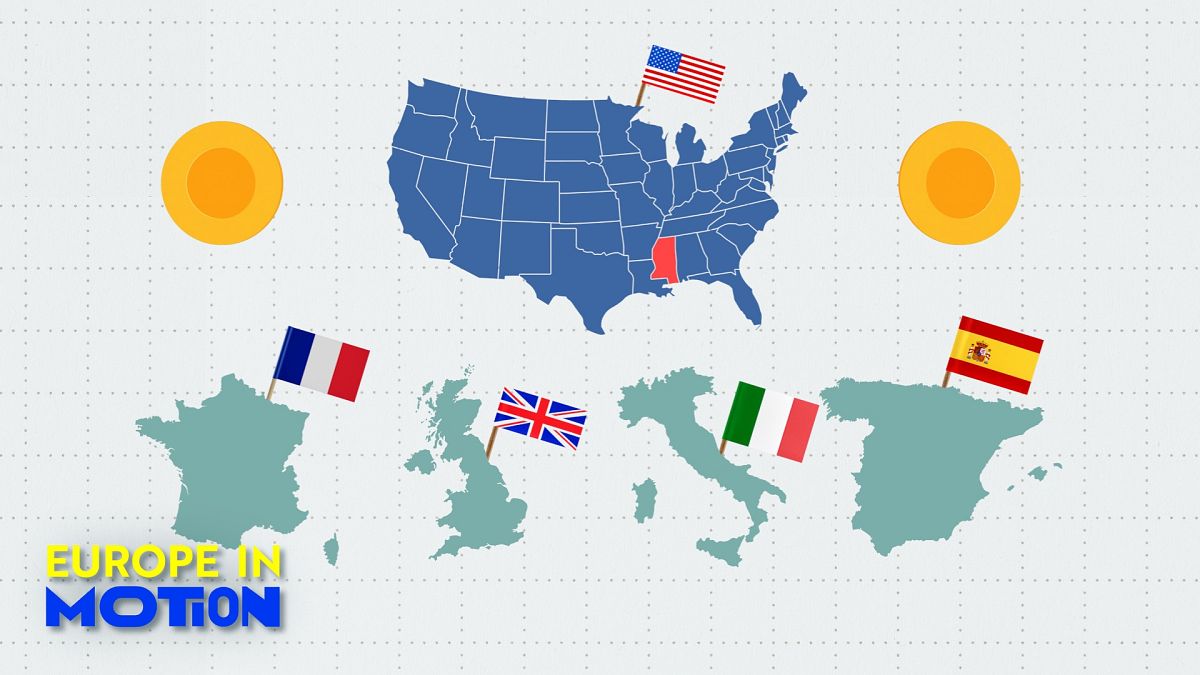The poorest US state has a higher GDP per capita than Europe’s top economies, except for Germany. Is this set to continue being the case in 2025?
In the third quarter of 2024, Mississippi's GDP per capita was €49,780, just €1,524 less than Germany’s at €51,304.
Mississippi is followed by West Virginia, Arkansas, Alabama and South Carolina — all of which surpass big European economies like Spain, Italy, and France.
On the other end of the spectrum, New York's GDP per capita reaches €107,485, and the District of Columbia leads with €246,523.
In Europe, GDP per capita ranges from €15,773 in Bulgaria to €125,043 in Luxembourg. The EU average is €40,060, compared to the US average of €80,023.
Among Europe’s top five economies, Germany leads with €51,304, followed by the UK with €48,441, France with €44,365, Italy with €37,227, and Spain with €33,070.
The gap narrows when adjusted for purchasing power parity (PPP) - which accounts for cost-of-living differences.
However, the US still outpaces all EU countries and the UK, except Luxembourg and Ireland, which are considered outliers due to the large number of foreign employers in Luxembourg and tax strategies by US multinationals in Ireland.
GDP measures a country’s total economic output, while PPP adjusts for price differences between countries, offering a clearer picture of living standards.
What's the scale of Germany's economic woes?
The EU's latest macroeconomic forecast for Germany said economic activity was expected to decline further by 0.1% in 2024, after going down by 0.2% in the first six months of the year.
After a 0.3% plunge in 2023, this would be the second year in a row with negative growth.
At the same time, experts say GDP is expected to pick up and return to growth with a 0.7% increase in 2025 and 1.3% in 2026.
Current uncertainty however has impacted investments and consumption, as well as the unemployment rate, which increased by 0.5% to 3.5% between September 2023 and September 2024.
The country is heading for a general election on Sunday 23 February.












